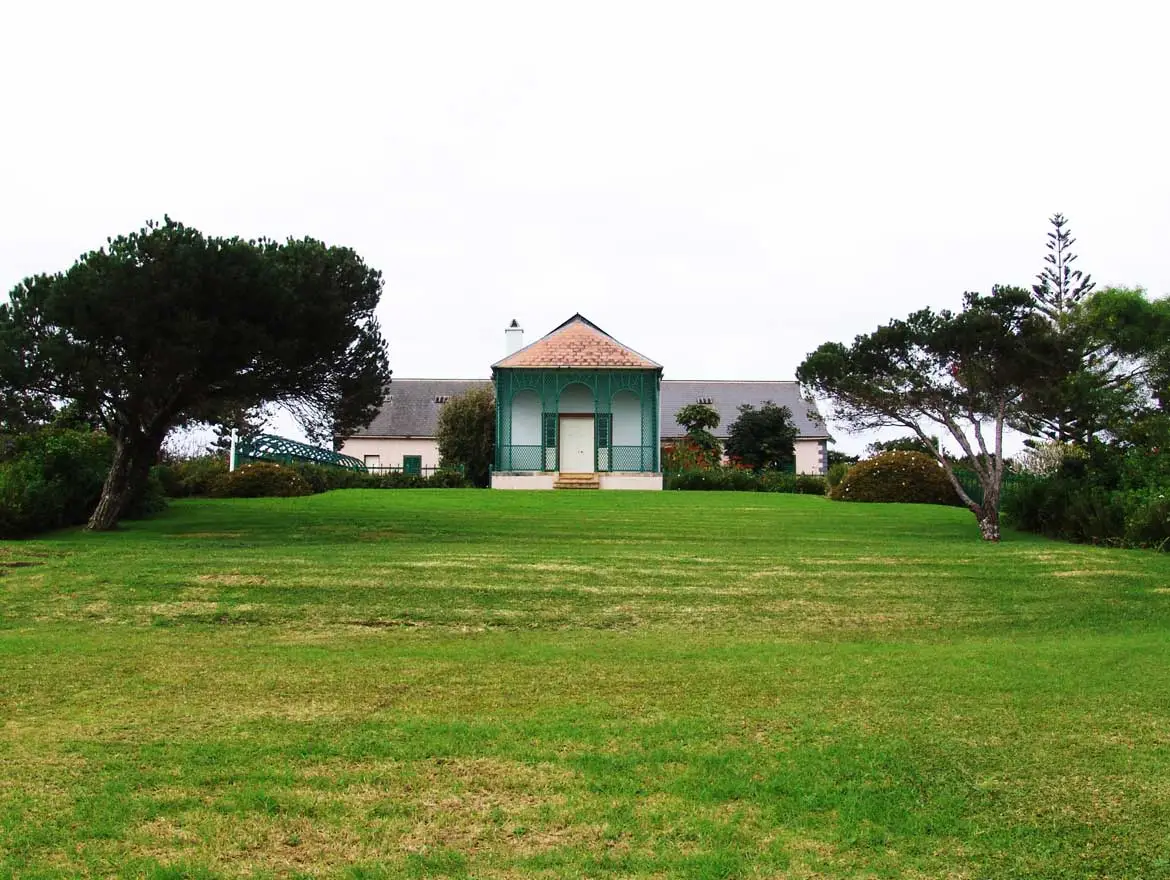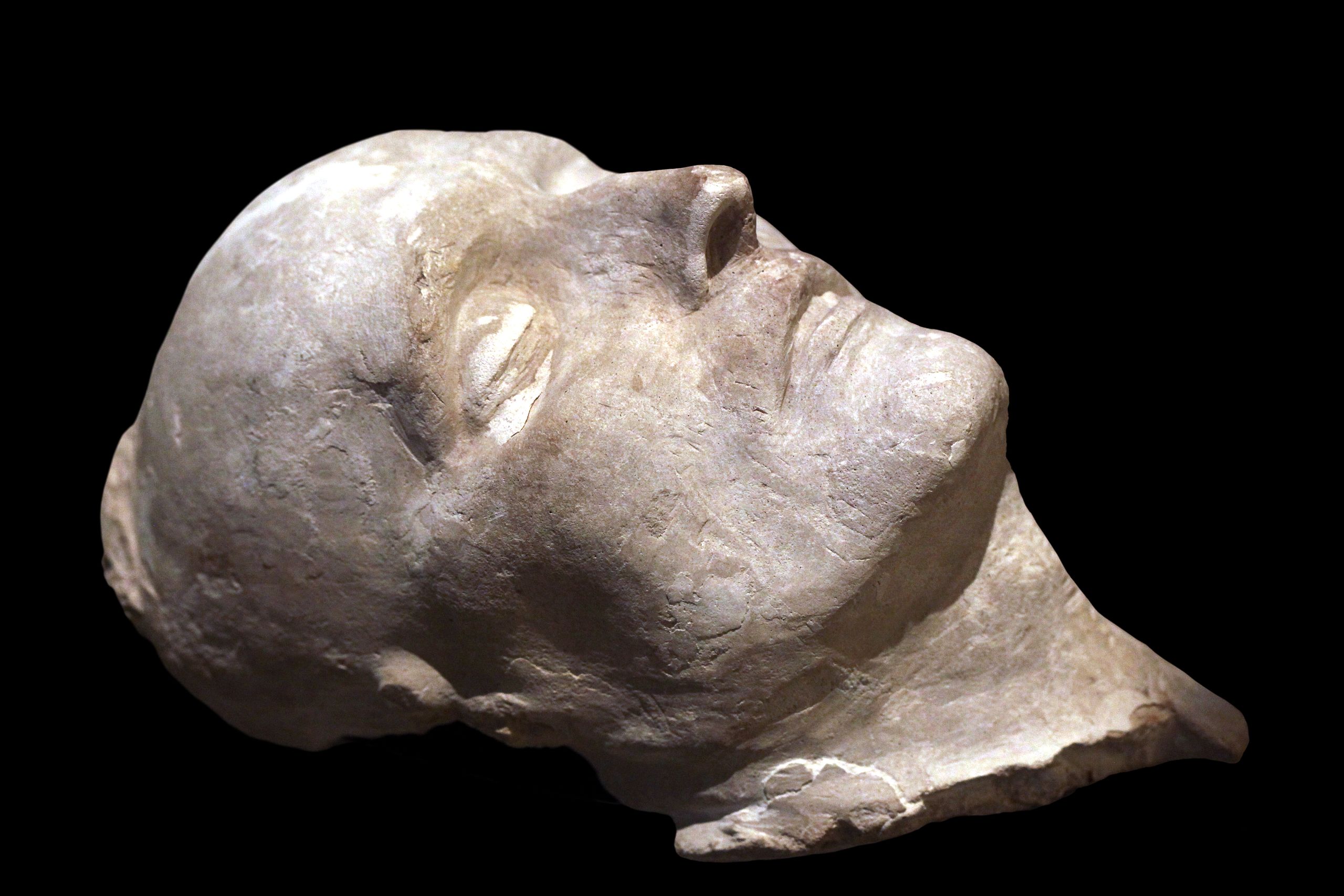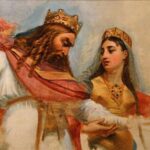The great Napoleon Bonaparte passed away at the age of 51 on the island of Saint Helena on May 5, 1821. Napoleon’s death “Napoleon gave back to God the most powerful breath of life that ever animated human clay,” as Chateaubriand put it. This sad ending brings to a close a long agony that began the day after Waterloo (Battle of Waterloo) and grew increasingly hopeless on the inhospitable island where the English had banished the former Emperor of the French, to whom they gave no other title than General Bonaparte, which was already sufficiently laudatory. Let’s go back to the hectic last weeks of his life on St. Helena to find out how he passed away and what he said before he did.
Sick Napoleon makes his will

On March 15, Napoleon became ill after drinking water from a familiar spring. He didn’t eat much and mostly just lounged on his cot all day. He stayed in on the sixteenth. In the middle of the day on the 17th, he was obliged to return to bed due to his illness. He was taken care of by Dr. Antomarchi until December 31st. He didn’t get out of bed for the entire time. He was cared for by both Antomarchi and the English physician Arnott from the first of April until the fifth. Ever since the English doctor O’Meara, who had been assigned to him, was removed by Hudson Lowe, the governor of St. Helena, Napoleon had denied the assistance of the British physicians, whom he distrusted and suspected of being spies for the governor, his personal nemesis. His condition worsened, however, and in April 1821 he consented to the treatment of Dr. Archibald Arnott, a physician and friend of the Bertrand family.
By this time, the Emperor’s health had significantly declined, and even Hudson Lowe, who had always been convinced that the Emperor suffered from a fictitious illness, was concerned. Arnold, a doctor of the 20th English Regiment, worked alongside Antomarchi to care for Napoleon until the latter’s death. Both physicians made frequent visits to Napoleon, but he consistently refused to take their prescription. Because he thought his kid would be curious, he spent the last month of his life giving lengthy descriptions of his condition to anybody who would listen.
Over the course of three days (April 10–12), he and his staff organized their personal and professional lives. He went back to his will several times, updating it with various codicils, demonstrating phenomenal memory all the way to the end by not leaving out a single individual, no matter how famous or obscure, for whom he was grateful. He named Bertrand, Montholon, and Marchand as his executors, paving the way for Marchand to succeed to the aristocratic title.
On April 15th, he presented Arnott with a snuffbox onto which he had etched the letter N with a penknife. A bust of his son was put at his bedside only days before he passed away. On May 1, it is thought that the disease could quickly come to a fatal end. On May 2, this prediction is confirmed. The patient’s condition seemed grave on May 3. Antomarchi spoke with the ship’s top medical officer, Dr. Shorst, and the first medical officer of the naval forces, Dr. Mitchell, but neither doctor was permitted to see the patient. On Friday, May 4, there was a modest improvement that permitted the patient to drink some water. Communication signals were sent back and forth all day long to update the status of the patient every two hours, who was thought to be terminal.
The last words and death of Napoleon I

Napoleon blacked out somewhere between 3 and 3:30 a.m. on the morning of May 5th, 1815. After two hours, his body temperature had dropped and his pulse was hardly noticeable. The death of the famous prisoner was seen by the British Admiral and the French representative on St. Helena, the Marquis de Montchenu, at Longwood. The latter uttered phrases with pauses in between, early morning about 7 a.m.: “My God! And the French nation! My son! Armed head!”
His last words were those. On the evening of May 5th, 1821, at about 5:50 (or 5:30, as other sources report), he passed away under Doctor Arnott’s care. A short time later, on-duty Captain Crockat and the medical staff of Doctors Shorst and Mitchell saw the corpse. Arnott spends the night in the death chamber. The missing Emperor seems to be sleeping. As a result of the disease’s wasting away of his body, he appears to have aged more gracefully than before. The tension in his face has faded. Visitors are impressed by his noble bearing. It wouldn’t take long for the island’s environment to change the way its physical characteristics looked.
By 7:00 a.m. on Sunday, May 6th, Hudson Lowe, Admiral Lambert, commander of the naval station, the Marquis de Montchenu, Brigadier-General Coffin, second-in-command, Messrs. Thomas L. Brooze and Thomas Greentree, members of the island’s governing council, and Captains Brown Hendry and Marryall, of the British navy, had arrived to witness the death of the prisoner before leaving. At Hudson Lowe’s urging, Captain Marryall sketched a likeness of the dead, and with the blessing of Count Montholon and Grand Marshal Bertrand, the picture was completed. Emotions were seen on Hudson Lowe’s face. People from all around Europe, including the French and the English, filed past Napoleon’s body to pay their respects.
At two in the afternoon, the corpse was autopsied in the presence of Antomarchi, who presided over the procedure, Doctors Shorst, Arnott, and Burton of the 66th English Regiment, Doctor Matthew-Livingstone of the Company of the Indies, and Bertrand and Montholon. The autopsy showed that the victim had a healthy bowel, liver, and lungs; a healthy heart coated in fat; a turned-over kidney; and, most notably, an extremely terrible stomach, eaten away by deep ulcerations and revealing squirrels; the stomach cavity contained a material like coffee grounds. The adhesions brought on by the illness make their way to the liver and stomach. Stomach cancer or a gastric ulcer were considered possible diagnoses. Until the time of the Emperor’s interment, Arnott will be responsible for watching over his body and the two arteries carrying his heart and stomach.
Napoleon’s uniform at the time was green with crimson facings, and it was adorned with the same medals and honors that he later became famous for. His corpse was laid out on the little iron cot he had used throughout his campaigns, with a silver cross on his breast and the blue fabric coat embroidered with silver that he had worn at Marengo. The abbot, Vignali, enters the chamber, dressed all in black, and begins the holy burial rites in the presence of the deceased’s family and friends. Then, for two days, a large number of people came to pay their respects during the body’s public viewing.
A funeral for a general

On May 8, the corpse was embalmed and put in three caskets: a tin coffin lined with white satin, a mahogany coffin, and a lead coffin. Unfortunately, the mahogany box that was supposed to hold the first three did not show up until the next morning. On May 9, with all the pomp and ceremony due to a high-ranking commander but not a head of state (a designation England refused to acknowledge), Napoleon was laid to rest. A carriage pulled by four horses carried the casket.
When the route became impassable, it was carried by a squadron of twelve grenadiers. Montholon and Bertrand held the corners of the funeral sheet, which had the coat of arms of the Marengo family. The marquis of Montchenu and other British commanders and officials were there. A procession of three thousand English troops, who had met the caravan as it left Longwood, followed the group as they made their way between two hedges of musicians. During the ceremony, eleven artillery salvos were fired.
Because he could not be buried “in the midst of the French people he had loved so much,” Napoleon’s body was now resting in a modest vault built next to a spring, under two willows, in the small, romantic valley of St. Helena, in the place he had chosen himself: on a small, isolated island in the middle of the ocean. Seeing as how difficult it was, English pioneers had hastily built a road, but they were unable to finish paving it so that automobiles could drive on it. Rapp was so overcome with grief at hearing of Napoleon’s death in the Tuileries that he could scarcely keep it hidden from the finally relieved Areopagus. Then, not to be outdone in expressing his displeasure with the ultras, Louis XVIII allegedly engages him not to hold back his tears by adding that he would only estimate it more.
The first death mask of the Emperor’s face was created by the English doctor Arnott, 6 hours after his death, using a wax negative of a candle; the second death mask was created by the English doctor Burton and the French doctor Antomarchi, 40 to 46 hours after his death; the delay was explained by the difficulty of finding plaster on the island and the poor quality of the gypsum discovered by Burton, which made the attempt hazardous. The first mask is the author’s own, and it shows a serene visage as if the person behind it had just fallen asleep. The second depicts a face with hollowed-out features and signs of tissue breakdown already visible.
One may reasonably doubt the feasibility of such a work without the knowledge of the Emperor’s relatives; secondly, because the wax used for the impression did not allow for a perfect reproduction of the features; and thirdly, because its existence was kept secret for too long; the authenticity of the second mask is suspected of being tampered with, with only a small part of the face being molded, and the rest of the mask is thought to be a fake. Therefore, it seems that none of these masks accurately depicts the Emperor’s visage as he lays dying. Despite the official stamp on Antomarchi’s mask, we would have to settle for Marryall’s drawing if this is not the case.
What did Napoleon die of?
As we have seen, the autopsy results were conflicting as to whether the Emperor had died from a stomach ulcer or cancer. This is reasonable given that these two illnesses were not easily separated until 1830. This theory has been challenged by Swedish dentist Forshufvud, who points to the disease’s progressive symptoms and the high arsenic content of the Emperor’s hair to argue for the thesis of arsenic poisoning. Lots of people have put pen to paper to discuss this theory, which was also held by Ben Weider, a missing Quebec businessman from 2008.
If an assassination took place, the perpetrator and the reason behind it must be identified. The Count of Montholon, one of the exile’s closest associates, stands up as the prime suspect since he made the wine that Napoleon drank. There are three likely explanations for the motivation: First, to serve Louis XVIII in the hopes of recouping lost wealth when the mission was completed; second, out of jealousy for the fact that Albine de Montholon had been the Emperor’s mistress on Saint Helena; and third, to serve Napoleon personally. The clever scaffolding that was built around it collapses under close scrutiny. Napoleon would be more appreciative of Montholon’s help than some far-off French ruler. During the occupation, after moving the Aiglon closer to his father, Hitler considered returning the mortal remains of the countess of Montholon to the Invalides because of the notoriety of the story surrounding Albine’s affair with the deposed Emperor and the book she wrote about it. Montholon, however, was a nobleman living during the Ancien Régime, a time when marital faithfulness was less of a priority than it is now, and he was aware of and tolerated his wife’s bravery.
Finally, it is true that Napoleon might have hoped for a repatriation from a simulated illness thanks to a carefully dosed intake of arsenic, and it is no less true that arsenic, combined with the drugs administered to the patient towards the end of his life, was likely to precipitate a fatal outcome, which would then be accidental and not premeditated, but all this remains to be proven. Although it was undeniable that the deceased had a high concentration of arsenic in his hair, as confirmed on multiple occasions, this is no longer an incontestable fact because other measurements have shown that the same concentration of arsenic was found in the hair of other people who lived at the same time as him. People living under the Empire probably came into contact with arsenic concentrations that would be considered dangerously high by modern standards because of the differences between then and now in terms of lifestyle.
In reality, several factors lend credence to the stomach ulcer or cancer theory: first, heredity; Napoleon’s father also died at around the same age and in similar circumstances; second, the Emperor’s lifestyle; he was a man of boundless activity, always on edge; he was content with irregular meals, too quickly absorbed, and poorly chewed; and third, the conditions of his detention on St. Helena; the island has a tropical climate, is hot and humid; and the old farm where On several occasions, his only form of exercise was light gardening.
He stayed hidden in his home for extended periods of time to avoid being discovered by his jailers and to make them fear an impossible escape. This kind of conduct was more than sufficient to expedite the conclusion of a life that had grown unbearable since he was deported. The English government intended to raise the standard of living for Napoleon. However, the nice house they imagined building was never meant to be more than a side-project. If Napoleon had wanted to move his residence, he might have done so to a more verdant and healthful area of the island, such as Plantation House, but the governor would have needed to be housed elsewhere.
Who lies under the Les Invalides?
Another question has been raised: is it really Napoleon’s body, which was returned by the British in 1840 and now rests beneath the dome of the Les Invalides? No, says Nicolas Restif de la Bretonne emphatically, it is that of Cipriani, the exiled Emperor’s butler who died in 1818, a thesis taken up by Bruno Roy-Henry. To back up their theory, these two authors point out the differences between what people who saw the Emperor’s last moments and those who dug up his body before he went back to France said.
It’s true that little inaccuracies in a story’s telling might be easily overlooked, but nobody who saw the Emperor’s coffins being opened ever doubted that he was the one inside. The genetic knowledge would put an end to such myths.
In spite of the passage of over two centuries since his death, the Emperor’s legacy continues to cast a pall of dispute over his successors. Let’s not mistake history for fiction, and stick to established facts rather than eliciting support for unproven theories that can only serve to pique the interest of sensationalists. The Emperor’s death on the desolate island of Saint Helena very certainly elevated his status to that of a martyr. This sad ending to a brilliant life has done much to cement his mythic status. The “gift” of Napoleon III’s rule was unquestionably bestowed on us by the English authorities of the moment, who ensured his humiliating death.
Bibliography:
- oberts, Andrew (2014). Napoleon : A Life. New York: Viking. pp. 778, 781–82, 784, 801. ISBN 978-0-670-02532-9.
- Magazine and Swanson,Erica Munkwitz,Samantha Reinders, “A Journey to St. Helena, Home of Napoleon’s Last Days“.




